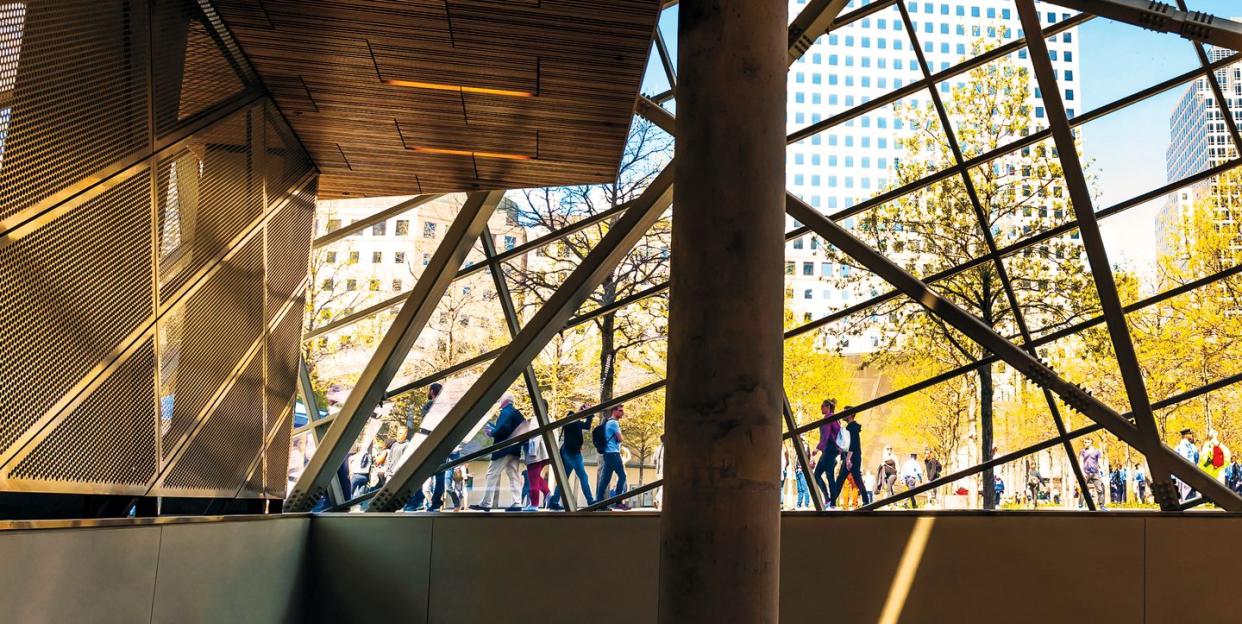Building a Pillar of Strength: A Reflection on Designing the 9/11 Memorial & Museum

On the morning of September 11, 2001, architect Craig Dykers was on a plane headed toward JFK when, out his window, he witnessed UA Flight 175 crash into the South Tower of the World Trade Center. He describes that day as “abstract” and “surreal.” Three years later Dykers’s Oslo- and New York–based firm, Snøhetta, won the commission to design a museum complex on the site, the only aboveground building on the memorial plaza.
Wedged on a tight sliver between Michael Arad and Peter Walker’s Reflecting Absence and Santiago Calatrava’s Oculus, the 9/11 Memorial & Museum’s emotionally charged pavilion holds more than 4,000 artifacts—including a wedding band, ballet slippers, fire trucks, even a torn seatbelt from one of the planes. A separate exhibition honors the 2,977 killed that day, as well as the six who died in the 1993 terrorist bombing of the buildings. Throughout, there are specially made stands for dispensing tissues.

While memorials like this one tend to be viewed as carrying dark feelings, one positive emotion underlies most of them: strength. Sometimes the materiality itself suggests toughness, tenacity, and determination. In the immediate aftermath of the attacks, four New York City architects—David Rockwell, Elizabeth Diller, Ricardo Scofidio, and Kevin Kennon—created a temporary tribute: a viewing platform with two long, gently sloping ramps overlooking the rubble. “The first experience people will have here is not as a construction site,” Rockwell said at the time, “but as an incredibly moving burial ground.” A humble example of utilitarian architecture—its bare plywood walls could be written on—the makeshift structure not only embodied New Yorkers’ raw fortitude, it offered them, in lieu of a permanent monument, a place for reflection, for pondering the future of Ground Zero, and for thinking far beyond it, too.
This story appears in the December 2020/January 2021 issue of Town & Country. SUBSCRIBE NOW
You Might Also Like


